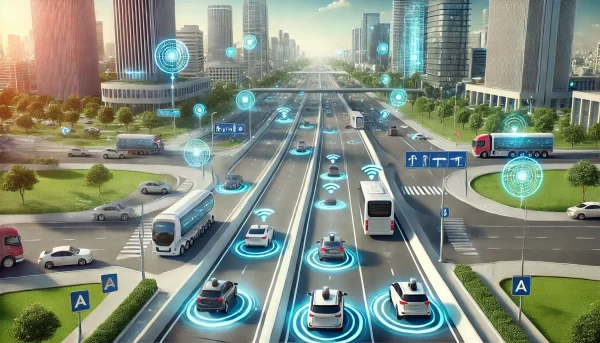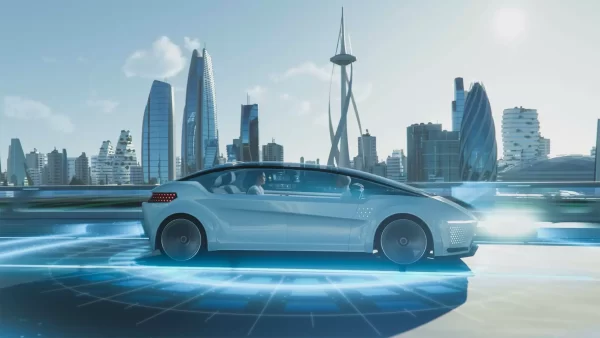Navigating the Future: The Impact of Autonomous Vehicles on Transportation
Few technological innovations have sparked as much fascination as autonomous vehicles (AVs). Transitioning from the realm of science fiction to tangible reality, self-driving cars are set to revolutionize transportation. Let’s delve into the profound ways AVs are poised to reshape our world.
A New Era of Autonomous Mobility:
The dream of autonomous vehicles has tantalized minds for decades. Recent advances in artificial intelligence, machine learning, and sensory technology have propelled us closer than ever to achieving fully autonomous driving. Pioneers like Tesla, Waymo, and Uber are leading this revolution, making significant progress in creating vehicles capable of navigating complex roadways without human intervention.
The Intricate Mechanics of Autonomous Vehicles:
Autonomous vehicles are equipped with a sophisticated array of sensors, cameras, radar, and LIDAR systems. These components work together to form a detailed, real-time map of the vehicle’s environment. Machine learning algorithms process this data, enabling the vehicle to make split-second decisions such as changing lanes, stopping at traffic signals, and avoiding obstacles with remarkable precision.
The Promising Advantages of Autonomous Vehicles:
- Enhanced Safety: Autonomous vehicles hold the promise of drastically reducing traffic accidents, which are predominantly caused by human error. With their advanced sensors and consistent vigilance, AVs could significantly lower the incidence of road mishaps.
- Increased Efficiency: AVs have the potential to optimize routes, decrease traffic congestion, and improve fuel efficiency. By processing real-time traffic data, they can avoid congested areas and take the most efficient routes, saving both time and energy.
- Improved Accessibility: Autonomous vehicles offer unprecedented freedom for individuals with disabilities or those unable to drive. They provide safe and reliable transportation options for people who have traditionally faced mobility challenges.
- Environmental Benefits: Many autonomous vehicles are being designed with electric propulsion systems. This shift from fossil fuels to electricity could greatly reduce the carbon footprint of transportation.
Overcoming Challenges:
Despite their promise, autonomous vehicles face several challenges. Technical issues like ensuring sensor reliability in adverse weather, ethical considerations in programming decision-making algorithms, and developing regulatory frameworks need to be addressed. Public trust and acceptance are also crucial for the widespread adoption of AVs.

The Expansive Future of Autonomous Transportation:
The future of autonomous vehicles extends beyond personal cars. Autonomous buses, trucks, and even delivery drones are being developed, each with the potential to transform their respective sectors. Envision a world where goods are transported by self-driving trucks, urban mobility is managed by autonomous shuttles, and packages are delivered by drones – the possibilities are endless.
Conclusion:
Autonomous vehicles represent a transformative shift in transportation. Although challenges remain, the potential benefits in terms of safety, efficiency, accessibility, and environmental impact make them a compelling vision for the future. As technology advances and society adapts, the dream of autonomous vehicles becoming a part of our everyday lives draws ever closer. The journey toward a self-driving future has only just begun, and the road ahead is filled with exciting possibilities.
FAQs:
1. How do autonomous vehicles operate?
AVs rely on a network of sensors, cameras, radar, and LIDAR to construct a detailed, real-time understanding of their environment. AI algorithms process this information to make driving decisions like steering, braking, and avoiding obstacles.
2. What role does AI play in autonomous vehicles?
AI is central to AVs, as it processes sensor data and makes driving decisions in real-time. Machine learning algorithms enable AVs to learn from their experiences and improve their functionality over time.
3. How do autonomous vehicles navigate urban environments?
AVs use high-definition maps, real-time sensor data, and advanced algorithms to navigate complex urban settings. They recognize traffic signals, pedestrians, cyclists, and other vehicles to make safe driving decisions.
4. What are the levels of autonomy in self-driving cars?
Autonomy is categorized into six levels, from Level 0 (no automation) to Level 5 (full automation). Level 0 involves no autonomous features, whereas Level 5 signifies complete self-driving capability without human intervention.
5. What advantages do autonomous vehicles offer?
The benefits of AVs include increased safety by minimizing human error, enhanced efficiency through route optimization, greater accessibility for individuals who cannot drive, and environmental benefits due to the adoption of electric propulsion systems.
6. What challenges do autonomous vehicles face?
Key challenges include technical issues like sensor performance in bad weather, ethical dilemmas in decision-making algorithms, the creation of comprehensive regulatory frameworks, and earning public trust.
7. When will autonomous vehicles become mainstream?
Predictions vary, but significant adoption of AVs could happen within the next decade, contingent on overcoming technological, regulatory, and societal obstacles.
8. Will autonomous vehicles replace human drivers entirely?
While Level 5 AVs could operate independently, human drivers might still be needed for certain tasks and oversight during the transition period.
9. How do autonomous vehicles handle emergencies?
AVs are programmed with safety protocols to manage emergencies by stopping or taking evasive actions. Ongoing advancements aim to enhance their ability to handle unexpected situations effectively.
10. What impact will autonomous vehicles have on jobs?
The advent of AVs may affect jobs in transportation and delivery sectors. However, it will also generate new roles in technology development, maintenance, and infrastructure, necessitating a shift in workforce skills.
11. Are autonomous vehicles eco-friendly?
Many AVs use electric propulsion, which can lower greenhouse gas emissions compared to traditional gasoline vehicles. Their ability to optimize routes further enhances energy efficiency.
12. Can autonomous vehicles communicate with one another?
Yes, AVs can engage in vehicle-to-vehicle (V2V) communication to share information about traffic, road hazards, and other critical data, enhancing overall safety and efficiency.
13. How are autonomous vehicles regulated?
Regulations vary globally. Governments and regulatory bodies are actively working to establish standards and frameworks that ensure the safe integration of AVs into existing transportation systems.




